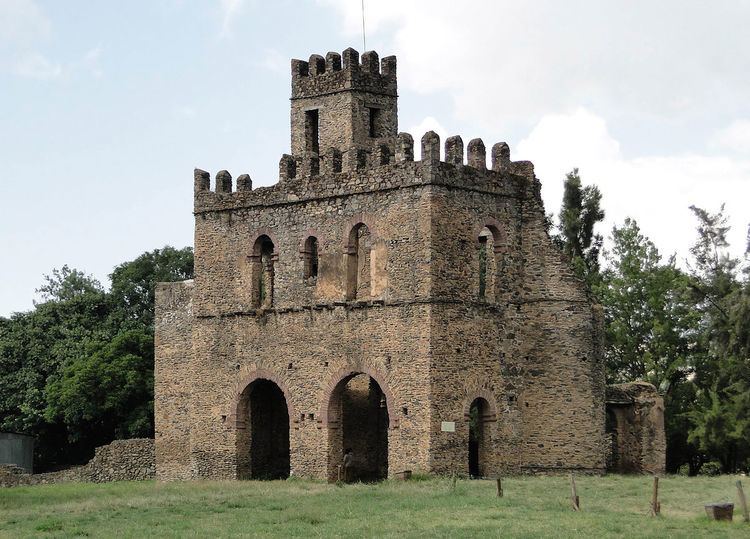Reign 1667-1682 Religion Ethiopian Orthodox Children Iyasu I Name Yohannes I Grandparents Susenyos I | Died July 19, 1682 House House of Solomon Parents Fasilides | |
 | ||
Grandchildren Yohannes II, Bakaffa, Dawit III Similar People Yekuno Amlak, Haile Selassie, Frumentius | ||
Great grandchildren Tekle Haymanot II | ||
Yohannes I (Ge'ez: ዮሐንስ yōḥānnis, Amh. yōhānnis, also sometimes called John I), throne name A'ilaf Sagad (Ge'ez: አእላፍ ሰገድ a'ilāf sagad, "to whom tens of thousands bow"), (c. 1640 – 19 July 1682) was nəgusä nägäst (1667–1682) of Ethiopia, and a member of the Solomonic dynasty. He was the fourth son of Fasilides.
Yohannes was appointed nəgusä nägäst by a council of the senior dignitaries of the Empire, at the encouragement of the noble Blattengeta Malka Krestos. The council then imprisoned the other sons of Fasilides on Mount Wehni, continuing the practice Fasilides had revived.
According to G.W.B. Huntingford, Yohannes spent much of his reign campaigning, stating that 6 of the 11 itineraries he reproduces were military expeditions. Three of these were against the Agaw in Gojjam, and Agawmeder, one against the Oromo, and two punitive expeditions to the area around Mount Ashgwagwa -- Angot and Lasta—to quash the revolts of Feres (in 1677) and Za Maryam (1679). Emperor Yohannes died on 19 July and was buried at Teda.
Religion under Yohannes
Due to the violent religious controversy that Catholic missionaries had caused in Ethiopia under the reign of his grandfather Susenyos, Yohannes acted harshly towards Europeans. In 1669, he directed Gerazmach Mikael to expel all of the Catholics still living in Ethiopia; those who did not embrace the beliefs of the Ethiopian Church were exiled to Sennar. Six Franciscans sent by Pope Alexander VII to succeed in converting Ethiopia to Catholicism where the Jesuits had failed 30 years before, were executed during his reign. As a result, he favored Armenian visitors, whose beliefs also embraced Miaphysitism, and were in harmony with the Ethiopian Church. These included one Murad, who undertook a number of diplomatic missions for the Emperor; and in 1679, the Emperor Yohannes received the Armenian bishop Yohannes, bearing a relic of Ewostatewos.
The growing controversy over the nature of Christ had grown severe enough that in the last year of his reign Yohannes called a synod to resolve the dispute. The Ewostathian monks of Gojjam advocated the formula "Through Unction Christ the Son was consubstantial with the Father", by which they came to be known as the Qebat ("Unction") faction, who were supported by the Emperor's own son Iyasu; they were opposed by the monks of Debre Libanos, who at that time still advocated traditional Miaphysitism. The outcome of the synod is in dispute: according to E.A. Wallis-Budge and H. Weld Blundell, Emperor Yohannes was convinced to condemn the Qebat doctrine, which led to Iyasu attempting to flee his father's realm; but according to Crummey, Yohannes favored the Gojjame delegation for political reasons: at the time Gojjam was an important province. These decisions were revisited once Iyasu became Emperor, at a synod he called in 1686.
